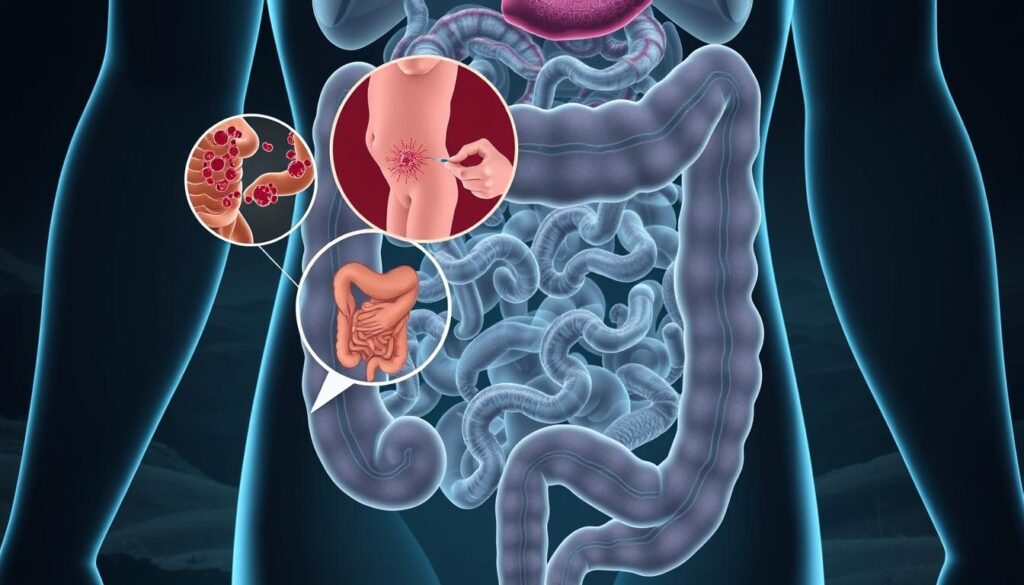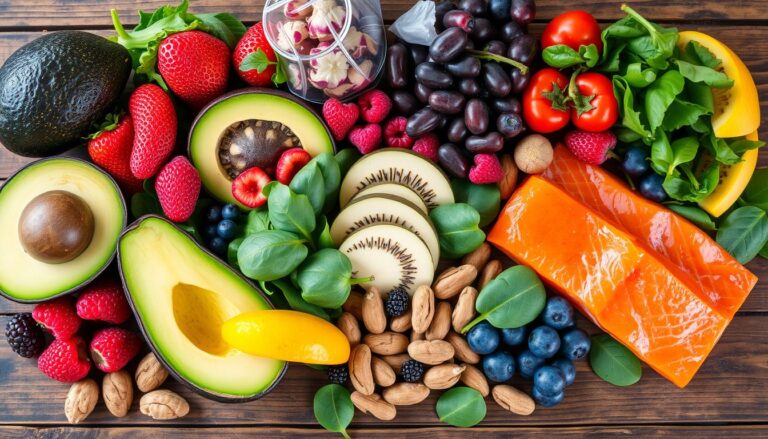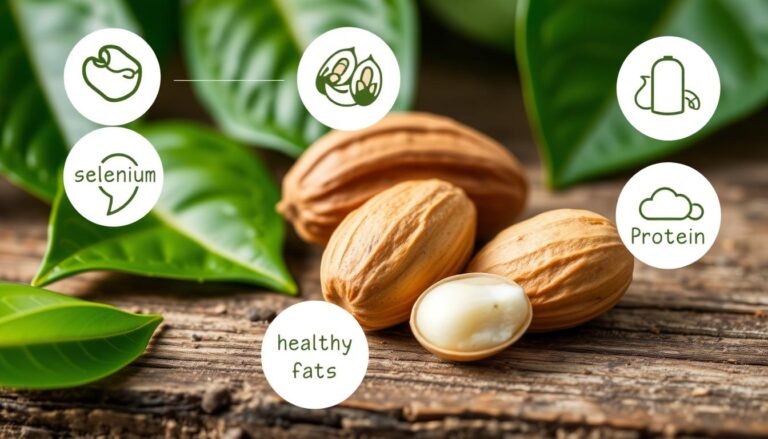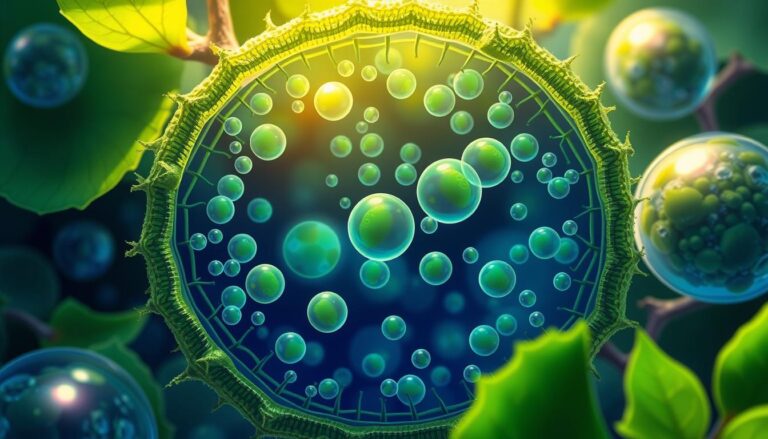What if the key to boosting brain function and fighting off illnesses wasn’t in a pill but on your dinner plate?
Emerging research reveals that trillions of microorganisms in your digestive system act as invisible partners shaping everything from your mood to your body’s defenses.
UC San Diego microbiologist Jack Gilbert Ph.D. notes that over 400 microbial species work alongside human cells producing vital nutrients like vitamins B and K while influencing critical bodily systems.
This microbial community doesn’t just process food it communicates with your brain through the gut brain axis and trains your immune system to recognize threats.
Studies show its composition can affect conditions ranging from anxiety to chronic inflammation. Yet many overlook how daily food choices directly reshape this ecosystem creating ripple effects across physical and mental well being.
This article unpacks how specific foods act as fuel for beneficial bacteria why processed diets disrupt microbial balance, and science backed strategies to nourish this hidden world.
You’ll discover practical steps to identify warning signs of imbalance and learn when dietary adjustments can make a measurable difference and when expert guidance becomes essential.
Key Takeaways
- Your digestive system hosts hundreds of microbial species that impact immunity mood, and metabolism
- Diet directly shapes microbial diversity affecting production of essential vitamins and protective compounds
- Gut brain communication influences mental health through neurotransmitters and inflammation pathways
- Fermented foods and fiber rich plants promote beneficial bacteria growth more effectively than most supplements
- Persistent bloating, fatigue or skin issues may signal microbial imbalance requiring dietary changes
Introduction The Importance of Gut Health
Your digestive tract hosts a thriving community of microorganisms that silently shape your well being. This living network contains bacteria viruses, and fungi working together to process nutrients and protect your immune system. Remarkably 7 out of 10 immune cells live in this ecosystem acting as frontline defenders against pathogens.
From the moment of birth, this microbial environment evolves through breastfeeding environmental exposure, and dietary patterns. Vaginal deliveries expose infants to essential bacteria while early antibiotic use can alter this delicate balance. These foundational years set the stage for lifelong wellness.
Modern habits pose significant challenges. Processed meals chronic stress, and medications often reduce microbial diversity. When key species disappear the entire system becomes vulnerable explains a 2023 Cell Host & Microbe study. This imbalance can trigger inflammation, digestive discomfort, and even affect mental clarity.
The consequences extend far beyond stomach issues. Research links microbial disruptions to skin conditions seasonal allergies, and energy slumps. Maintaining this internal ecosystem helps regulate metabolism emotional stability, and resistance to infections proof that tiny organisms wield enormous influence over your body.
Why Diet Matters Gut Health and Diet What Science Really Says
Your fork holds more power than you think it’s a tool shaping an invisible ecosystem within. While genes and birth circumstances lay the foundation for your microbiome daily meals actively remodel it.
Research confirms dietary patterns can alter bacterial populations in as little as 24 hours, proving food’s role as both architect and landscaper of this inner world.
Plant diversity drives microbial richness. A 2022 Nature study found individuals consuming 30+ weekly plant types hosted 40% more beneficial species than those eating fewer than 10. Each vegetable fruit or legume feeds distinct bacterial groups that collaborate to strengthen intestinal barriers and regulate inflammation.
Contrast this with the Standard American Diet packed with emulsifiers and sugars. These ingredients starve fiber loving microbes while fueling organisms linked to intestinal permeability.
Processed foods act like bulldozers, simplifying ecosystems that took years to develop notes gastroenterologist Dr. Elena Martinez.
Individual responses highlight the microbiome’s uniqueness. Two people may metabolize identical meals differently based on their bacterial makeup. This explains why some thrive on fermented items while others experience bloating a reminder that personalized nutrition trumps one-size-fits-all approaches.
Understanding these interactions transforms eating from routine to strategy. Choosing colorful produce fermented items, and whole grains cultivates resilient communities better equipped to support immunity mood, and metabolic functions.
Unveiling the Gut Microbiome How It Affects Immunity and Mood
Your body’s microbial residents work like microscopic chemists crafting compounds that shield you from harm. These organisms transform fiber into short chain fatty acids key defenders that reinforce intestinal walls and starve harmful pathogens. Research shows these acids boost mucus production by 30%, creating a physical barrier against invaders.
The Role of Beneficial Bacteria
Friendly microbes act as immune instructors. They expose white blood cells to harmless substances, teaching them not to overreact to pollen or foods. This training prevents allergies and autoimmune responses explains immunologist Dr. Rachel Kim. Specific strains also generate vitamin K crucial for blood clotting, and B vitamins that convert food into cellular energy.
How Microbes Produce Vital Compounds
When bacteria ferment plant fibers, they release butyrate a fatty acid that maintains colon acidity. This acidic environment blocks dangerous bacteria like Salmonella while nourishing protective species. Studies link higher butyrate levels to reduced inflammation markers in joints and brain tissue.
Disrupting this delicate balance weakens defenses. Low microbial diversity correlates with frequent infections and prolonged recovery times. Prioritizing fiber rich diets helps sustain these invisible allies ensuring they continue producing your body’s natural armor.
Microbial Functions Digestive Enzymes Vitamin Production and By-Products
Imagine your dinner transforming into vital nutrients through a microscopic assembly line. Human enzymes handle basic breakdowns but bacteria in the lower intestines tackle complex leftovers. This partnership allows absorption of nutrients like plant fibers and resistant starches that would otherwise pass through undigested.

Digestive Process and Enzyme Assistance
Bacterial enzymes act as specialized tools unlocking nutrients trapped in tough plant cell walls. For example Bifidobacterium species produce enzymes that break down oligosaccharides in beans and lentils. These reactions release energy rich compounds while feeding neighboring microbes. Without this teamwork up to 30% of dietary fiber might remain unused by the body.
Balancing By Products for Overall Health
Microbial metabolism creates both treasures and trash. Beneficial strains convert fiber into vitamin K for blood health and B vitamins for energy production.
However imbalanced communities generate excess gas or inflammatory molecules. A 2023 Nutrients study found that diets with 25+ grams of daily fiber increased helpful short-chain fatty acids by 60% compared to low fiber plans.
Processed foods shift this balance. Emulsifiers and sugars feed bacteria that produce bloating compounds. It’s a tug of war between microbial allies and opportunists notes microbiologist Dr. Lisa Chen. Regularly consuming diverse plants helps maintain populations that turn food waste into wellness boosters rather than discomfort triggers.
Dietary Recommendations Probiotics Prebiotics and Fiber
The right food combinations can transform your plate into a microbial power station. Fermented items and fiber packed plants work together to nourish beneficial bacteria while creating compounds that strengthen intestinal defenses. This dynamic duo supports everything from nutrient absorption to immune responses.
Building Microbial Resilience Through Food
Fermented foods like kefir and tempeh deliver a triple punch. They supply live probiotics essential nutrients, and postbiotics bioactive molecules produced during fermentation. A 2023 UCLA study found daily consumption increased microbial diversity by 19% compared to control groups.
Soluble fiber acts as premium fuel for these microbes. Oats, lentils, and citrus fruits contain fibers that stimulate butyrate production a compound shown to repair intestinal lining.
Prebiotics are like fertilizer for your bacterial garden explains nutritionist Dr. Maya Patel. This synergy allows probiotics to colonize more effectively while crowding out harmful species.
Whole foods outperform most supplements because they provide complementary nutrients. For example kimchi offers both probiotics from fermentation and fiber from cabbage. Regular consumption helps maintain bowel regularity while supporting microbial turnover key for sustained benefits.
Practical implementation matters more than perfection. Adding sauerkraut to sandwiches or mixing chia seeds into oatmeal creates simple daily habits. These choices build microbial communities capable of adapting to stressors from antibiotics to environmental toxins while optimizing digestive efficiency.
Navigating Ultra Processed Foods and Their Impact on Gut Bacteria
The snacks lining grocery store aisles aren’t just tempting your taste buds they’re rewriting the rules of your internal ecosystem. Ultra-processed items like frozen pizzas and sugary cereals create ideal conditions for harmful bacteria to dominate.
These industrial formulations often lack the fiber that beneficial microbes need while overflowing with emulsifiers that erode protective mucus layers.

Read more: Fiber Maxxing The New Nutrition Craze Explained
Research reveals these foods trigger a double threat. Harmful strains produce inflammatory molecules that travel through the bloodstream while their toxic metabolites damage intestinal walls. A 2023 Stanford study found participants eating processed diets had 50% higher levels of cortisol a stress hormone linked to microbial imbalances.
The Standard American Diet’s reliance on convenience foods correlates with troubling patterns. Microbial diversity drops by 30% in heavy consumers increasing risks for inflammatory bowel conditions and metabolic disorders. These dietary patterns essentially roll out a red carpet for disease-promoting organisms warns gastroenterologist Dr. Alicia Nguyen.
Simple swaps yield measurable changes. Replacing deli meats with roasted chicken or exchanging chips for nuts reduces inflammatory compounds within weeks. Each whole-food choice starves problematic bacteria while nourishing species that strengthen gut lining integrity.
Understanding this biological warfare empowers smarter decisions. While occasional treats won’t dismantle your microbiome consistent choices determine whether your inner ecosystem becomes a sanctuary or battleground.
Lifestyle Factors Exercise Sleep and Gut Rhythms
Your daily habits might be programming your internal ecosystem more than you realize. Emerging research shows how routines like meal timing and physical activity directly influence microbial behavior. These patterns affect everything from nutrient absorption to inflammation control.
Maintaining a Balanced Circadian Rhythm
The digestive system operates on a biological clock synchronized with eating patterns. People who eat at irregular times disrupt microbial activity reducing their ability to process fiber. A 2023 Cell Reports study found consistent meal schedules increased beneficial bacteria by 22% compared to erratic eating.
Physical activity creates hormonal shifts that support microbial diversity. Exercise triggers the release of butyrate producing compounds key nutrients for intestinal cells. Just 30 minutes of daily movement can enhance microbial metabolism within weeks.
| Lifestyle Factor | Impact on Microbes | Recommendation |
|---|---|---|
| Consistent Sleep | Boosts microbial diversity | 7-9 hours nightly |
| Regular Meals | Strengthens circadian rhythms | 3 meals at fixed times |
| Stress Management | Reduces harmful bacteria | 15-minute meditation daily |
Sleep quality proves equally vital. Individuals getting less than 6 hours nightly show 30% lower microbial variety. Cortisol spikes from chronic stress create environments where harmful species thrive. Prioritizing rest and mindfulness practices helps maintain equilibrium.
People who align their body’s natural rhythms through structured routines often report better digestion and energy. These connections highlight why holistic approaches outperform isolated dietary changes every day.
Understanding Dysbiosis Causes Effects and Diagnostic Testing
Ever feel like your stomach has a mind of its own? This could signal dysbiosis a microbial tug of war where harmful bacteria overpower beneficial strains. Factors like antibiotics chemical exposure, and erratic eating patterns disrupt this delicate balance, leaving ecosystems vulnerable to invaders.

Read more: The Natural Antibiotic You Should Know About
Identifying Symptoms and Recognizing Imbalance
Persistent bloating after meals often serves as the first red flag. Gas diarrhea or cramping may follow as opportunistic microbes ferment undigested food particles. A 2023 Johns Hopkins study found 68% of patients with these symptoms showed measurable reductions in microbial diversity.
Antibiotics act like wildfire in this ecosystem destroying both weeds and native plants. Without enough beneficial strains pathogens like C. difficile colonize empty territories. One course of broad spectrum antibiotics can alter populations for months, warns infectious disease specialist Dr. Mark Torres.
Environmental stressors worsen imbalances. Processed foods feed inflammation-producing species while pesticides reduce protective bacteria. Irregular bowel movements allow harmful compounds to linger, further irritating the intestinal lining.
Testing options include stool analyses measuring microbial ratios and hydrogen breath tests for bacterial overgrowth. Combined with symptoms, these tools help clinicians design targeted probiotic or dietary interventions to restore equilibrium.
The Gut Brain Axis Connecting Your Digestive and Emotional Health
Your emotions might be chatting with your stomach right now. This two way communication highway the gut brain axis uses nerve signals and chemical messengers to link digestive activity with cognitive processes.
Nearly 90% of serotonin a mood-regulating neurotransmitter, originates in intestinal cells influenced by your microbiome.
How Signals Influence Mood Stability
Microbial metabolites directly interact with the vagus nerve, sending updates to the brain. Beneficial bacteria produce calming compounds like GABA while imbalanced communities trigger stress hormones. A 2022 Nature Neuroscience study found individuals with diverse microbiomes had 25% lower anxiety scores.
Chronic stress reshapes this dialogue. Cortisol spikes reduce mucus production, allowing inflammatory molecules to enter the bloodstream. This creates a feedback loop where poor emotional states worsen gut function and vice versa.
Simple dietary shifts can recalibrate this system. Fermented foods increase serotonin precursors while omega-3-rich fish oil reduces inflammation along the gut-brain axis. These adjustments help microbial communities stabilize mood signals naturally.





